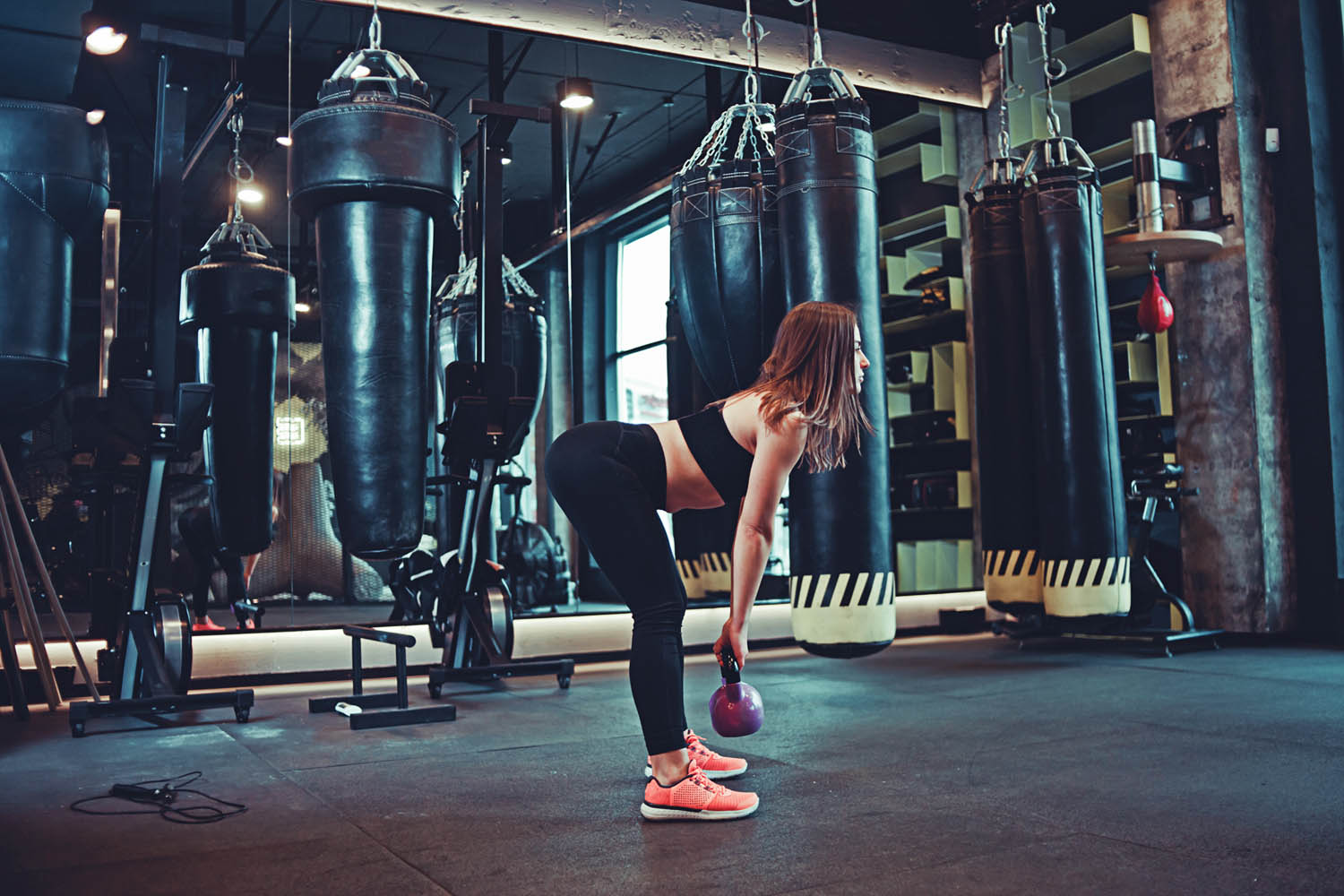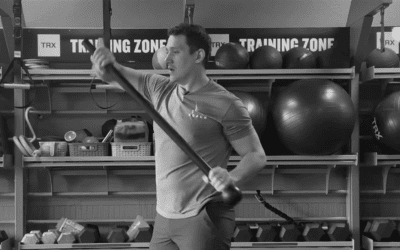Romanian Deadlifts for Hulk-Thick Glutes, Hams & Hops

Ryan Tomanocy is a CSCS, certified CrossFit Level 1 trainer, and USA Weightlifting sports performance coach. Romanian deadlifts have been a staple of his training since his collegiate rowing career at Ithaca College. Here he explains why he still loves RDLs, how to do them the right way, and programming them for the biggest booty gains.

Change the Way You Train
Glutes Are the New Abs
If you haven’t heard, glutes are the new abs. That’s right! Cue viral sensations of cake check (lying barbell booty challenge) and the trending “booty handle squeeze rows.” I want to talk about an exercise that can get you ahead in the dump truck department AND drastically increase your fitness and performance.
The Romanian deadlift is a fantastic way to teach lifting from the hips and legs instead of the back, which results in greater booty gains. There are very few exercises better at building size, strength, and power in the underdeveloped leg and butt muscles – erector spinae, gluteus maximus, hamstrings, and adductors.
The movement itself is a hip-hinge driven by pelvis-on-femur hip flexion and extension with the feet in a closed-chain position on the ground. Don’t be the guy or gal who sleeps on this exercise and then cries about their poor, frumpy peach and lousy state of fitness.
Let’s dive in.
How the RDL Got Its Name
First off, WHAT A NAME. I honestly used to believe Romanian deadlifts were invented as the preferred movement Roman soldiers used to lift dead bodies off the battlefield.
In reality, the RDL was named by Romanian weightlifting legend Nicu Vlad during a 1990 clinic in San Francisco. During the clinic, Nicu clean and jerked 500+lbs then proceeded to perform a mysterious deadlift-like exercise working up to 550+lbs for sets of three reps.
Nicu claimed this was key to his success in Olympic weightlifting. When asked what the mysterious lift was called, Nicu paused, shrugged and said, “Let’s call it the Romanian deadlift or RDL for short.” And thus, the RDL was born.
Believe whatever story you want, but trust me when I say the RDL is the granddaddy of developing Olympic-Gold caliber strength and size in your posterior chain.
How to Do RDLs the Right Way
The setup is similar to a conventional deadlift, but the execution of the eccentric (down) portion is where things get spicy.
Step 1: Step up to your bar and stand with your feet slightly wider than your hips. Your toes should face forward with the bar directly over your bottom shoelace (about mid-foot).
Using a double overhand grip (both palms down), place your hands on the bar about a thumbs-width outside of your legs (so a little wider than hip-width). Make sure your hands are even.
Step 2: Press your feet into the floor and maintain a neutral spine (no rounding or arching) with a slight bend in your knees. Pull your shoulders down and back, gaze forward, and position your weight over the midfoot.
Take a breath in and brace your trunk by slightly pulling your bottom ribs towards your hip bones (think how you would flex if you were about to get punched in the stomach.) Initiate the movement by pushing your feet down into the ground.
Step 3: As the bar leaves the floor, continue pushing your feet into the ground while maintaining a fixed isometric position through the torso and upper body: head and neck stable, shoulders held down and back, neutral spine, and slight trunk brace. Ideally, only your lower body is moving.
Once the bar clears your knees, your intent should be to stand tall and squeeze your booty. Nothing more, nothing less.
Step 4: Here’s where the RDL differs from a regular deadlift. Hinge back with your hips, allowing only a micro bend in your knees. You should feel a stretch in your hamstrings. On the way down, fight for that fixed torso/upper body position as you bow forward while simultaneously pushing your butt back behind you.
Don’t try to keep your knees straight if the flexibility isn’t there. Once the bar clears your knees, it should move straight down to meet the floor.
Remember: If you don’t approach training with the intent to move well with quality first, then injuries will force you to do so later.
Common Errors
I often see people lifting with the bar too far from their shins, which eliminates your hamstring tension and transfers the work to your lower back. This is not what you want.
Some other fixable form errors: lifting your toes up/shifting weight to your heels, too little or too much bend in the knees, excessive arching/rounded back position, rounded shoulders that aren’t fixed down and back, and bending elbows.
Avoid these errors for rock-solid form, injury-free gym sessions, and the biggest gains.
Effective Cues
If you need a mental coach, try to imagine these cues for quality RDL form.
- Keep the bar close to your body
- Claw the ground with your feet
- Feel your weight over your midfoot
- Soft knee bend
- Crunch your belly to eliminate arching your spine
- Push your belly button forward to reduce rounding
- Pretend you’re holding a piece of paper under your armpit to fix your shoulders and lats
RDL Progressions
RDL’s can be done with dumbbells, kettlebells, a sandbag, a gallon of milk, heck even bodyweight RDL’s can provide a potent stimulus for both beginners and experienced gym-goers in certain training scenarios. (I once used a small red resistance band for about 80 reps and was waddling-no-stairs-toilet-ouch sore).
As mentioned before, I usually start people off with the RDL hold for time. Even the strongest of girls and boys will feel some type of way after 30+sec of holding.
I typically progress folks as follows:
RDL Holds → Walking RDLs → KB RDLs → KB Single Leg Contralateral RDLs → BB RDLs
Once you’ve mastered the barbell RDL, you can try out some more advanced variations like ipsilateral RDLs, Around the World RDLs, and barbell complexes. You can also incorporate tempo, band resistance, deficits, etc.
The Single Leg Landmine Romanian Deadlift is a top favorite for balance and unilateral glute work.
As with any exercise, you can manipulate a variety of factors to either add complexity and continue driving adaptation or reduce complexity and scale back the stimulus.
Always prioritize a neutral spine position. Also, consider your level of preparation prior to plugging these into your programming. For example, you need sufficient core strength before attempting to perform any of these with progressive loads. Ensuring safety of the spine is most important with this movement.

RDL Programming Considerations
Start with your current training focus (general hypertrophy, building a big booty, maximizing your deadlift, preseason strength for rugby, etc).
If your training focus involves having a bigger and stronger backside, then 99% of you should be doing RDLs at some point in your training.
1. Choose an appropriate starting variation based on your experience, equipment availability, etc.
2. For muscular endurance and hypertrophy, start with 2-4 sets of 10-20 reps each set, resting minimally between sets. Add these in toward the middle or end of your session, 1-2x per week, building volume over 6-8 weeks.
3. For strength and power, start with 4-6 sets of 3-6 reps each set, resting 90sec to 3min between sets. Keep these heavy intense sets towards the beginning or middle of your session 1-2x per week for best results over 6-8 weeks.
4. If you’re not sure where to start, give #2 a try first.
Once you’ve got the RDL down and start regularly using it in your training, watch your hips and legs explode with strength and power. You’ll see your 1RM’s increase, sprint times drop, and the enemy defense scared shitless of your athleticism on the field.
(Oh, and start saving some money for new clothes because your glutes and hams will be busting through all of your old skinny-leg stuff.)
Here’s to thicker legs and higher hops!
Find Your Perfect Training Plan
Sometimes all you need to reach your destination on your fitness journey is an expert guide. We've got you covered. Browse from thousands of programs for any goal and every type of athlete.
Try any programming subscription free for 7 days!
Want Training Tips, Exercise Guides & Knowledge Bombs Sent to Your Inbox?
Sign up for the FitNerd newsletter from TrainHeroic
Related articles
3 Ways to Improve Mobility Without Stretching
Are you still trying the endless foam rolling and stretching exercises to get that deep squat position? We know how important mobility is for great, or even GOOD performance. All professional athletes have some comfortability in end ranges of motion. So, what else do...
The Ultimate Guide to Lunges: Queen of all Glute Exercises
Your glutes are the largest muscle group in your body. They’re responsible for almost everything your legs do—walking, running, jumping, squatting, lunging, and just standing upright. As far as moving through space goes, strong glutes are the bedrock of overall...
A Beginner’s Guide to Steel Mace Training
Author: Jesse Grund
Mace training will make you a better mover without it’s not confining you to a fixed space or predetermined range of motion. Second, it’s an offset load with 80 to 90 percent of the weight in the head. You’re also constantly having to resist rotation, which creates greater core engagement.

Join the community
Sign up for the latest training news and updates from TrainHeroic

About TrainHeroic
Support
Made with love, sweat, protein isolate and hard work in Denver, CO
© 2022 TrainHeroic, Inc. All rights reserved.






